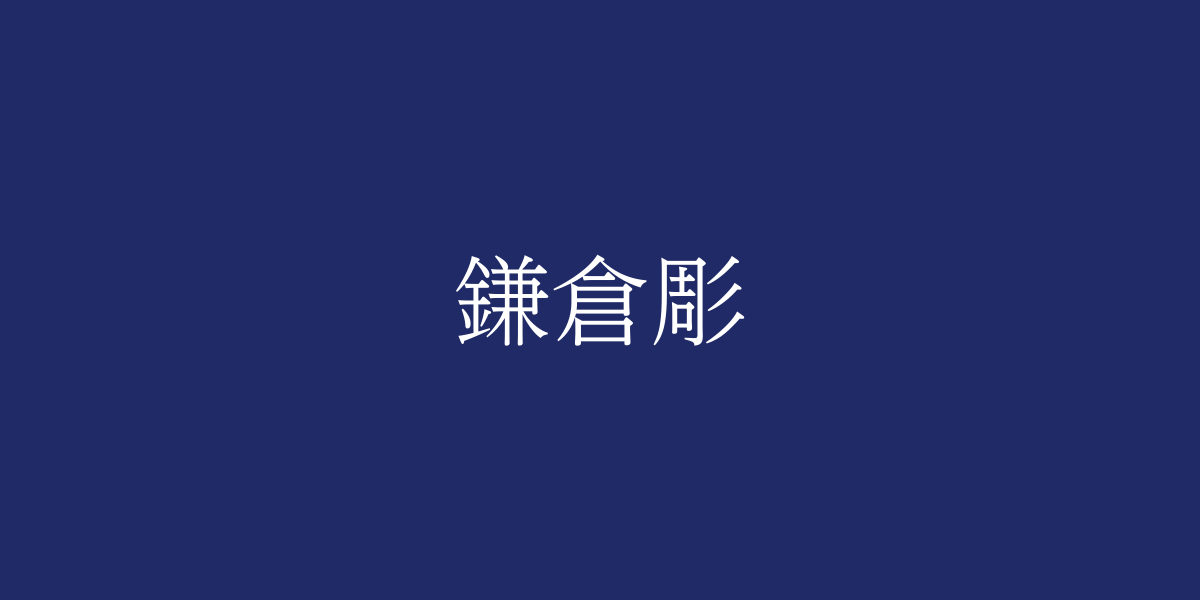Japanese culture, rich in traditions and techniques passed down from ancient times, captivates global audiences with its colors and shapes. Notably, “Kamakura-bori” symbolizes Japan’s traditional colors and is renowned for its delicate beauty and high craftsmanship, continually enchanting many. This article steps into the world of Kamakura carving, exploring its history, production regions, manufacturing process, and where to acquire these exquisite pieces.
What is Kamakura-bori?
Kamakura-bori refers to traditional Japanese carved lacquerware, which involves intricate carving on wood and subsequent application of lacquer. This technique was introduced from China during the Heian period and evolved uniquely during the Kamakura period. It is characterized by its finely detailed carvings and the deep luster of lacquer, with patterns that convey both flamboyance and tranquility.
The Origin of Kamakura-bori
The name “Kamakura-bori” comes from Kamakura City in Kanagawa Prefecture, where many artisans continue to handcraft each piece, preserving the techniques passed down through generations. While Kamakura is the heartland, traditional Kamakura-bori pieces are crafted throughout Japan, all tracing back to their roots in Kamakura.
The History of Kamakura-bori
The history of Kamakura-bori dates back to the Kamakura period. Initially influenced by Buddhist culture, carving techniques flourished, later being applied to furniture and household items during the Edo period. Over time, these techniques were refined and became more accessible, with the tradition continuing to the present day.
The Manufacturing Process of Kamakura-bori
The manufacturing process of Kamakura-bori is carried out with meticulous attention through the following steps:
- Preparing the Wood: First, wood such as cherry or zelkova (けやき) is cut to the desired shape.
- Drafting the Design: The pattern to be carved is drawn onto the wood base.
- Carving: The design is finely carved following the draft.
- Lacquer Application: Multiple layers of lacquer are applied over the carving.
- Finishing: Once the lacquer dries, the surface is polished to bring out a beautiful shine.
Renowned Kamakura-bori Manufacturers
Below are some of the prominent Kamakura-bori manufacturers:
- Kamakura-bori Studios: Artisans here create various Kamakura-bori pieces, showcasing their skill.
- Kamakura-bori House: A manufacturer that respects tradition while embracing new designs.
- Chokoku Lacquer Studio: Offers high-quality Kamakura-bori crafted by experienced artisans.
Where to Buy Kamakura-bori
Kamakura-bori can be purchased at the following locations:
- Kamakura-bori Specialty Store: Located in Kamakura, this store offers a wide range of Kamakura-bori.
- Traditional Crafts Store: These stores across Japan sell traditional crafts, including Kamakura-bori.
- Online Shops: Kamakura-bori is also available through various online platforms.
Related Facilities for Kamakura-bori
Visiting these facilities can deepen your appreciation and understanding of Kamakura-bori:
- Kamakura-bori Museum: A museum displaying the history and pieces of Kamakura-bori.
- Carving Workshop Experience: Facilities offering hands-on carving experiences.
- Traditional Crafts Hall: Showcases traditional crafts from around Japan, including exhibitions of Kamakura-bori.
Summary of Kamakura Carving
Kamakura carving represents one of Japan’s traditional cultural crafts, symbolizing the depth of its history and craftsmanship. Each piece, meticulously crafted by artisans, possesses a beauty that resonates with viewers, continuing to be cherished by many to this day. Through this article, we hope to introduce you to the allure of Kamakura carving and rediscover its value.

























